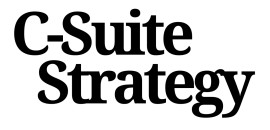
Understanding the Role of a Strategic Planning Guide
Recognizing the Importance of Strategic Guidance
A strategic planning guide acts as a compass for the organization, providing direction and clarity in an often unpredictable business landscape. As a responsible leader, understanding the crucial role of strategic guidance is the first step toward enhancing your leadership practices. For executives, a well-defined strategic guide serves multiple purposes:- Facilitation of Clear Vision: It helps the team align with the mission and vision, ensuring that everyone moves in the same direction.
- Aiding in Decision-Making: Decision-making becomes more efficient by providing a clear framework, enabling the group to navigate complexities with confidence.
Key Attributes of an Effective Strategic Planning Guide
Characteristics of a Successful Strategic Guide
When it comes to crafting a strategy that truly aligns with an organization's mission and vision, certain characteristics are essential in a strategic planning guide. These attributes can significantly influence the effectiveness of your strategic plan and help navigate through the complexities of the planning process.
- Clarity of Vision: A successful guide must maintain clear, overarching goals that resonate with the company's long-term vision. This ensures that every strategic action is purposeful and supports the organization's direction.
- Comprehensive Process: The guide should encompass a detailed planning process, incorporating multiple stages from goal setting to the implementation of action plans. This structure provides a well-rounded approach to strategic facilitation.
- Facilitation Capabilities: Planning facilitators should excel in guiding teams through strategy meetings by establishing ground rules and ensuring productive discussions. Skilled facilitation will promote effective decision-making and harmonize group dynamics during planning sessions.
- Adaptability and Flexibility: A guide must be adaptable to accommodate changes in the business environment or organization. Flexibility supports the planning facilitator's role in adjusting strategies to meet evolving business needs.
- Measurable Outcomes: It is crucial for the strategic planning guide to incorporate metrics for assessing strategic successes. This aids in measuring the impact of the planning session and overall strategic initiatives on organizational growth.
These attributes ensure that strategic planning is not merely a checkbox exercise but a transformative journey for both the team and the organization. For more insights on integrating effective strategic initiatives, consider exploring innovative approaches to portfolio management.
Facilitating Effective Decision-Making
Steering Decisions with Strategic Insight
In the complex realm of strategic planning, facilitating effective decision-making is the linchpin that ensures initiatives align closely with the organization's overarching mission and vision. The planning process serves as a critical platform for distilling insights and clarifying objectives, thus enabling strategic facilitators to guide teams toward informed decisions. Embarking on this journey requires a solid grasp of the goals and objectives. A skilled planning facilitator will employ a systematic approach, integrating strategic insights to help the organization weave its plans into the fabric of its operations.- Structured Strategy Meetings: A successful strategy meeting shouldn't be seen merely as an agenda item but rather a cornerstone session where teams engage deeply with the strategic objectives. Effective facilitators manage these meetings with a finely-tuned sense of timing and focus, promoting a conducive environment for deliberation and consensus-building.
- Utilization of Planning Sessions: Planning sessions provide a forum to align long-term goals with actionable steps. Facilitators use these sessions to refine the strategic vision, paving the way for a coherent action plan that everyone can rally behind.
- Facilitators Foster Engagement: A facilitator's role encompasses not just guiding discussions but also ensuring that every voice within the group is heard. Through careful facilitation, facilitators help bridge view points, transforming potential dissent into productive dialogue that shapes the strategic plan.
- Use of Visual Aids: Tools like flip charts play a significant role in capturing real-time ideas and keeping the team focused on collective goals. Visual facilitation assists in maintaining clarity and paving the way for actionable insights.
Overcoming Challenges in Strategic Planning
Identifying and Navigating Strategic Challenges
Every strategic planning session will invariably encounter hurdles, and understanding how to spot these challenges is crucial. A competent planning facilitator plays a pivotal role in helping an organization address these issues. The presence of a knowledgeable facilitator will guide your team efficiently through each phase of the strategic planning process, ensuring that the planning facilitation is both effective and insightful. One of the fundamental steps in overcoming challenges is establishing clear ground rules from the outset. These rules foster an atmosphere of open communication, facilitating a strategy meeting where all opinions are valued and considered critical to the overall vision. Employing tools like a flip chart to visualize ideas can help keep the group focused on the organization's goals and objectives. This approach ensures everyone is aligned with the mission and long-term vision. Strategic planners often face difficulties in aligning team members' diverse perspectives. Planning facilitators are adept at turning these differences into strategic assets rather than roadblocks. By defining a concrete action plan that encompasses both individual and collective insights, you can transform potential conflicts into opportunities for growth. Time management is another common obstacle in strategic planning. With a clear agenda and time-bound objectives, organizations can ensure productive planning sessions that focus discussions on creating actionable plans. This helps in preventing meetings from becoming protracted and unproductive. Finally, it's important to revisit the strategic plan regularly. The organization's context and environment constantly evolve, and your strategic plan needs to adapt accordingly. Moreover, regular reviews help maintain momentum and engagement in achieving strategic goals. Through continuous evaluation, your team will be better equipped to tackle unforeseen challenges, advancing your strategic vision effectively.Integrating a Strategic Planning Guide into Leadership Practices
Embedding Strategic Planning into Leadership Practices
Integrating a strategic planning guide into leadership practices is a pivotal step for any organization aiming to align its mission and vision with actionable goals. This process requires a thoughtful approach to ensure that strategic objectives are not only defined but also effectively implemented across all levels of the organization.
To begin, leaders must establish clear ground rules for the planning process. This involves setting expectations for participation and collaboration during planning sessions. A skilled planning facilitator can help guide these discussions, ensuring that all voices are heard and that the team remains focused on the organization's long-term goals.
Next, it is essential to create a structured planning session that encourages active engagement. Utilizing tools like a flip chart can help visualize ideas and keep the team aligned on the strategic vision. These sessions should be designed to foster open dialogue, allowing leaders to address potential challenges and opportunities as they arise.
Once the strategic plan is developed, leaders must focus on the implementation phase. This phase will involve translating the strategic objectives into action plans that are both measurable and achievable. Regular strategy meetings should be scheduled to review progress, adjust plans as needed, and celebrate milestones.
Finally, the integration of a strategic planning guide into leadership practices requires a commitment to continuous improvement. Leaders should regularly evaluate the effectiveness of their strategic initiatives, using feedback from the board staff and other stakeholders to refine their approach. By doing so, organizations can ensure that their strategic planning efforts remain aligned with their evolving goals and objectives.
Measuring the Impact of Strategic Planning on Business Success
Evaluating Strategic Planning Outcomes
To measure the effectiveness of strategic planning on business success, it's crucial to evaluate outcomes systematically. This process not only helps to understand the impact but also serves as a foundation for continuous improvement in leadership strategies.- Goal and Objective Alignment: Begin by assessing how well the strategic plan aligns with the organization's long-term goals and mission vision. Ensure that the objectives are clear and achievable, serving as a reliable benchmark for measuring progress.
- Performance Metrics: Establish clear performance metrics at the outset. This could involve setting measurable targets across different areas of the organization to determine where the plan is succeeding or needs adjustment. Remember, specific metrics related to areas like market share, customer satisfaction, and financial performance can be particularly telling.
- Regular Review Meetings: Facilitate strategy meetings regularly to track progress effectively. In these sessions, planning facilitators can help ensure the focus remains on the strategic goals and any deviations are addressed promptly, maintaining the plan on course.
- Feedback Mechanisms: Implement feedback systems that combine input from board staff, team members, and stakeholders. Insights gained from diverse perspectives can reveal strengths and areas for improvement, helping to refine the strategic approach.
- Adjust and Adapt: The planning phase will sometimes reveal unforeseen challenges or opportunities. Adapt your strategy accordingly, using flip charts or digital tools if needed, to visualize any updated goals or objectives. A robust strategy should be flexible enough to accommodate necessary changes.
- Facilitator Insights: Leverage the expertise of planning facilitators who can offer critical insights into the effectiveness of the planning facilitation. Their role in ensuring successful implementation should not be underestimated.














